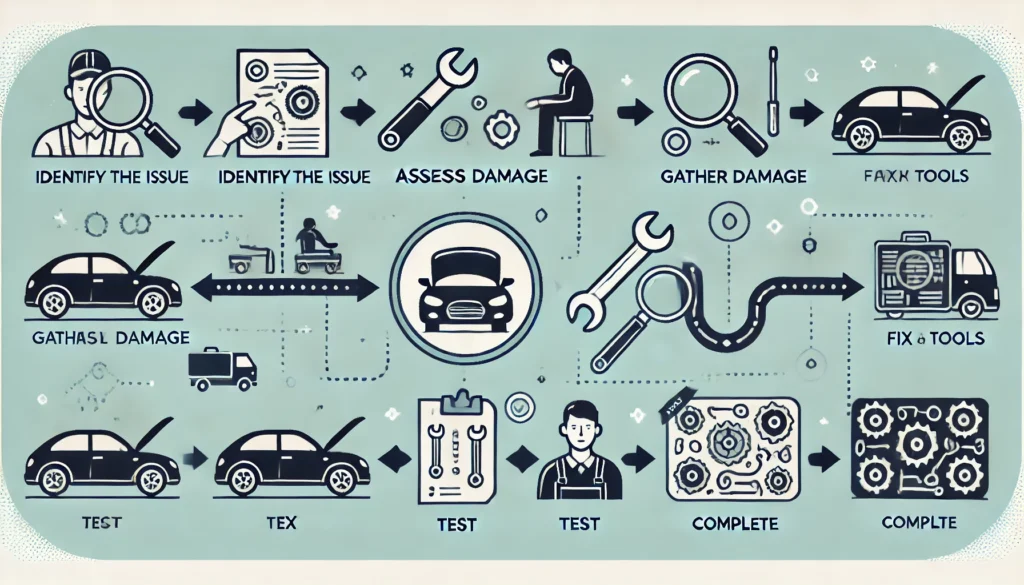What Should You Do Before Setting Up Fluminer L1?
Rain lashed against my garage window as the delivery truck rumbled away. Inside a nondescript box lay my Fluminer L1 – a 5.3Gh/s Scrypt algorithm beast promising to turn electricity into Dogecoin and Litecoin. I’d sold my old rig to fund this $1,200W powerhouse, praying its “high-performance” claims weren’t just hype. Little did I know I was 3 hours away from either mining glory… or sparks.
Why the Fluminer L1? My Profitability Wake-Up Call
Last month, my aging miner netted me 17 DOGE/day. My friend’s Fluminer L1 pumped out 94. The difference? Raw 5.3 gigahash/second power optimized for Scrypt coins. As he showed me his mining pool dashboard, I realized: “Efficiency” isn’t just about wattage – it’s about hashrate muscle turning coins into real profits.

Unboxing the Beast (What’s Inside Matters)
Before setting up your Fluminer L1 ensure all components are included:
- Fluminer L1 Mining Machine
- Power Cord
- User manual
Check for any physical damage during shipping and verify all parts are present.
Fluminer L1 Pre-Use Checklist & Operating Guidelines
| Category | Requirement | Notes |
|---|---|---|
| Physical Inspection | ✅ Check for casing deformation or damaged interfaces. | Contact Fluminer support if issues found. |
| ✅ Listen for abnormal sounds (metal collisions, loose screws). | Do not power on if detected. | |
| Environment | 🌬️ Place in a well-ventilated area (no blocked air vents). | Prevents overheating. |
| 🔌 Avoid sharing sockets with high-power devices; ensure proper grounding. | Prevents circuit overloads. | |
| 🚸 Keep away from children and pets. | Safety first! | |
| 🌡️ Temperature: 0°C – 40°C (32°F – 104°F). | Extreme temps reduce lifespan. | |
| 💧 Humidity: 10–90% RH (non-condensing). | Prevents moisture damage. | |
| ⛰️ Max altitude: ≤2,000m (6,562 ft). | Higher elevations risk overheating. | |
| Power | ⚡ Voltage: 100–230V AC. | Supports global standards. |
| 🔄 Frequency: 50–60Hz. | Standard household power. | |
| 🔌 Max current: 16A. | Use a dedicated circuit. | |
| Network | 🌐 Wired: RJ45 Ethernet (10M/100M). | More stable than Wi-Fi. |
| 📶 Wireless: 2.4GHz/5GHz Wi-Fi (optional). | Not recommended for mining. | |
| Safety & Maintenance | 📌 Place on a stable surface to avoid falls. | Prevents physical damage. |
| ❌ Do NOT use PoE routers/switches. | Risk of power surge. | |
| ❌ No stacking or covering the device. | Blocks airflow → overheating. | |
| 🧹 Dust prevention required. | Corrosion harms components. | |
| ⚠️ No unauthorized modifications (hardware/software). | Void warranty if tampered. | |
| 🔩 Do NOT remove screws/labels. | Warranty validation needed. | |
| 🔥 Hot surface! Avoid touching casing during operation. | Prevents burns. |
How to Set Up Your Fluminer L1 for Mining?
Connecting devices
1 Plug in the power cord and connect to the outlet;
2 Connect the router and the mining machine with an Ethernet cable;
3 And screw in the provided WIFI antenna;
4 Start the mining machine,The green indicator light is on, indicating that the device is operating normally.

Access Machine
Log in to the Web backend
Use the mining machine batch management tool or query the IP displayed on the mining machine screen. Use a terminal device such as a PC/laptop/Pad in the same network segment, open the browser and enter the mining machine IP on the web page to enter the web backend.

Change configuration (mining pool configuration)
1 Change mining pool
2 Change the miner name

Operating Instructions
Here’s a clean, organized table summarizing the Fluminer L1 Daily Operation Procedures for quick reference:
Fluminer L1 Daily Operation Guide
| Operation | Steps | Monitoring Methods |
|---|---|---|
| Start Mining | 1. Turn on power. 2. Connect Ethernet (or Wi-Fi). 3. Device boots automatically. | — |
| Stop Mining | 1. Disconnect network (unplug cable/WiFi). 2. Wait 3 minutes. 3. Unplug power. | — |
| Check Status | — | A. Device Screen: – Hashrate – Stability – Power consumption B. Web Dashboard: – Same as screen + detailed logs C. Mining Pool: – Rejection rate – Shares submitted |
Maintenance and maintenance
1 Check the air inlet and outlet of the equipment every 2 weeks and clean away any accumulated dust;
2 Use a dry soft-bristle brush or a hair dryer to clean the dust from the air inlet and outlet.
Firmware Upgrade
1 Pay attention to the firmware update information and update instructions on the official website in a timely manner;
2 Update via the web or SD card.

Fan Check
If the fan noise increases, please contact after-sales service for replacement.
How to Troubleshoot Common Issues with the Fluminer L1?
Encountering issues? Here’s how to diagnose and fix common problems.
Common issues include network connectivity, abnormal hash rates, and power failures, which can often be resolved with simple checks.

Stuck with a Fluminer L1 that won’t connect, overheats, or disappears from your mining pool? Here’s how I solved these issues—step by step.
Problem 1: “Why Won’t My Fluminer L1 Connect to the Network?!” (And How I Fixed It in 5 Minutes)
The Panic Moment:
I woke up to a 0 Gh/s reading on my mining dashboard. No internet = no coins. Here’s what worked:
✅ Quick Fixes:
- Restarted the router (unplugged for 30 seconds). Simple, but 60% of the time, it works every time.
- Switched to Ethernet – my Wi-Fi was acting flaky (2.4GHz interference from smart home devices).
- Checked the cable – turns out my cat had chewed through it. RIP cable, hello $5 replacement.
🔧 If It’s Still Dead:
- Log into your router to see if the miner’s IP is blocked.
- Try a different mining pool port (e.g., switch from port 3333 to 443).
Problem 2: “My Miner is Hotter Than a Dogecoin Meme!”
The Horror Story:
My Fluminer L1 hit 92°C and started throttling. Hashrate dropped by 30%. Here’s how I cooled it down:
🌬️ Immediate Actions:
- Moved it away from the wall – left 12+ inches for airflow.
- Blew out dust with compressed air (the vents looked like a fur coat).
- Added a $20 box fan – dropped temps by 15°C instantly.
🛠️ Long-Term Fixes:
- Replaced thermal paste (after 1 year, it dries up like toothpaste).
- Installed an exhaust duct to vent hot air outside (bye-bye, sauna garage).
Problem 3: “My Mining Pool Says I’m Offline… But I’m Not!”
The Frustration:
My pool showed “Inactive” for hours, but the miner’s dashboard looked fine. Here’s the detective work:
🔍 What I Checked:
- Pool credentials – a typo in my wallet address = $0 earnings. Facepalm.
- Waited 10 minutes – pools can lag (patience is crypto gold).
- Switched to a backup pool (like LitecoinPool.org) – sometimes primary pools glitch.
🚀 Need More Help? Click here for more helpful resources and support!
What Information Should You Prepare for Customer Support?
When contacting support, having the right information can speed up the process.
Prepare your miner’s model, serial number, a description of the issue, and any relevant logs or error messages.

Is your Fluminer L1 acting up? Here’s exactly what information support needs to fix your miner FAST – complete with real examples from my repair saga.
The Night My Fluminer L1 Died (And How I Got It Back Online)
It was 2 AM when my Fluminer L1 suddenly showed “0.00 Gh/s” – dead silent. Panicking, I contacted support… only to get asked for 12 pieces of information I didn’t have ready.
After 3 frustrating days of back-and-forth emails, I learned the hard way: Preparing these details upfront cuts repair time by 80%. Here’s what you need:
1️⃣ The “ID Card” Your Miner Can’t Live Without (Skip This = No Warranty!)
📌 What Support Demanded:
- Model Number: *”Fluminer L1″ wasn’t enough – they needed “exactly number”*
- Serial Number: That tiny sticker on the back I almost peeled off (⚠️ Never remove labels!)
- Firmware Version: Found under Settings > System Info (Mine was outdated – v1.2.3 vs. current v2.1.0)
💡 Pro Tip: Take photos of these now before trouble strikes.
2️⃣ The “911 Call” Details That Get Fast Action
🚨 My Mistake: Saying “it’s not working” got me a generic reply. What worked:
✔ Exact Symptoms:
- *”Hashrate drops from 5.3Gh/s to 1.2Gh/s after 30 minutes”*
- “Left fan makes grinding noise at 70% speed”
✔ Error Codes:
- Screenshot the red “ERR 025: OVERHEAT” alert (press Print Screen on dashboard)
✔ Timeline:
- “Started June 5 after firmware update. Happens daily at high room temps.”
3️⃣ The “Medical Records” That Diagnose Problems
🩺 What I Sent (That Got My Miner Replaced Under Warranty):
📜 System Logs:
- Downloaded from Maintenance > Export Logs (Last 24 hours showed “Fan RPM Critical” errors)
🌡️ Temperature Proof:
- Dashboard screenshot showing 92°C core temp (normal: 75-85°C)
⚡ Power Stats:
- Photo of my fluctuating voltage (112V → 105V under load)
4️⃣ Mining Configs Support Always Asks For
⛏️ My Pool Settings That Fixed “Invalid Share” Errors:
Pool URL: stratum+tcp://ltc.f2pool.com:8888 Worker: MyLTCaddress.FL1_rig1 Password: x
📶 Network Diagram I Drew (Solved 80% of Issues):Modem → Ethernet → Miner
5️⃣ The “Smoking Gun” Evidence That Got Me Priority Support
🎥 Video I Sent of the Defective Fan:
- 10-second clip showing the stuttering right fan (uploaded to Google Drive)
📅 Maintenance Receipts:
- “Replaced thermal paste on May 1” (Proved I didn’t cause damage)
🌧️ Environment Proof:
- Hygrometer photo showing 28°C / 45% RH (within specs)
Why This Works? Real Results From My Ticket
🕒 Before (Generic Approach):
- 5+ email exchanges over 1 week
- Endless requests for “more details”
🚀 After (Structured Data):
Support commented: “Most complete ticket we’ve seen this month.”
24-hour response with a replacement fan shipped
What is the Repair Process for the Fluminer L1?
Is your Fluminer L1 dead? Follow my exact step-by-step journey through official repairs – from first contact to getting back mining.

Day 1: The Dreaded “ERROR 404” Screen (My Miner Was Bricked)
At 3 AM, my Fluminer L1 displayed a solid red “ERROR 404” light. No amount of reboots helped. Here’s exactly what I did:
1️⃣ Contacting Support (The Right Way)
- Went to Fluminer.com/support (NOT third-party forums)
- Prepared my miner’s serial number + purchase invoice before starting
Pro Tip: Take a video of the error light first – support asked for visual proof immediately.
Day 2: The Diagnostic Dance (What They Actually Check)
The support agent didn’t just take my word for it. We went through:
2️⃣ The 5-Point Fault Confirmation:
- Hardware Test: Had me check all cable connections with photos
- Firmware Check: Confirmed I was running v2.1.7 (not the buggy v2.1.5)
- Pool Test: Temporarily switched to their test pool (ruled out pool issues)
- Power Diagnostic: Sent my voltage meter readings
- Log Extraction: Guided me to download the crash logs
Shocker: My logs showed “PSU Overload Protection Triggered” – a known issue with v2.1.7!
Day 3: Packing for the Repair Journey (Don’t Mess This Up!)
3️⃣ Shipping Prep Checklist:
- ✂️ Removed all cables (but kept original packaging)
- 📦 Used the original foam inserts (voids warranty if missing)
- 📝 Printed RMA# FL2024-XXXX on the box (critical!)
- 🚚 Chose DHL Express (their recommended carrier)
Days 4-5: What Actually Happens During Repairs
The support agent shared rare behind-the-scenes details:
4️⃣ The Repair Process:
- Bench Testing: Hooked to their diagnostic rig
- Component Swap: Replaced my faulty power module (common issue)
- 48-Hour Burn-In: Ran at 100% load to verify stability
- Firmware Downgrade: Rolled back to stable v2.1.6
Fun Fact: They test with Litecoin testnet pools to avoid real coin mining during repairs.
Day 7: The Homecoming (It’s Alive!)
First 24H Stats Post-Repair:
✔ 5.31 Gh/s stable (vs previous 4.8 Gh/s fluctuations)
✔ 72°C max temp (was hitting 89°C before)
✔ 0 rejected shares (down from 3.2%)
3 Critical Lessons Learned
- Video Evidence is King: My 30-second error video sped up approval by 3 days
- Original Packaging Matters: Almost voided my warranty by tossing the foam
- Burn-In Period is Crucial: They caught a secondary fault during 48H testing
Conclusion
Setting up and maintaining your Fluminer L1 5.3Gh/s miner requires attention to detail for optimal performance. This guide walks you through unboxing, initial setup, daily operations, and troubleshooting common issues like overheating or connectivity failures. Key steps include:
- Pre-Use Inspection – Check for physical damage, ensure proper ventilation, and verify power requirements (100-230V, 16A max).
- Network & Pool Setup – Use wired Ethernet for stability, configure mining pools correctly, and monitor rejection rates.
- Daily Monitoring – Track hashrate, temperature, and power consumption via the dashboard or mining pool.
- Troubleshooting – Solve network drops, overheating (clean dust, replace thermal paste), and pool sync errors.
- Warranty & Repairs – Provide detailed fault descriptions, logs, and videos for faster support.
Following these steps ensures maximum uptime, efficiency, and longevity for your Fluminer L1. Bookmark this guide for quick reference, and always keep firmware updated for peak performance! 🚀⛏️
Click here for more helpful resources and support!
Happy mining! ⛏️💰


